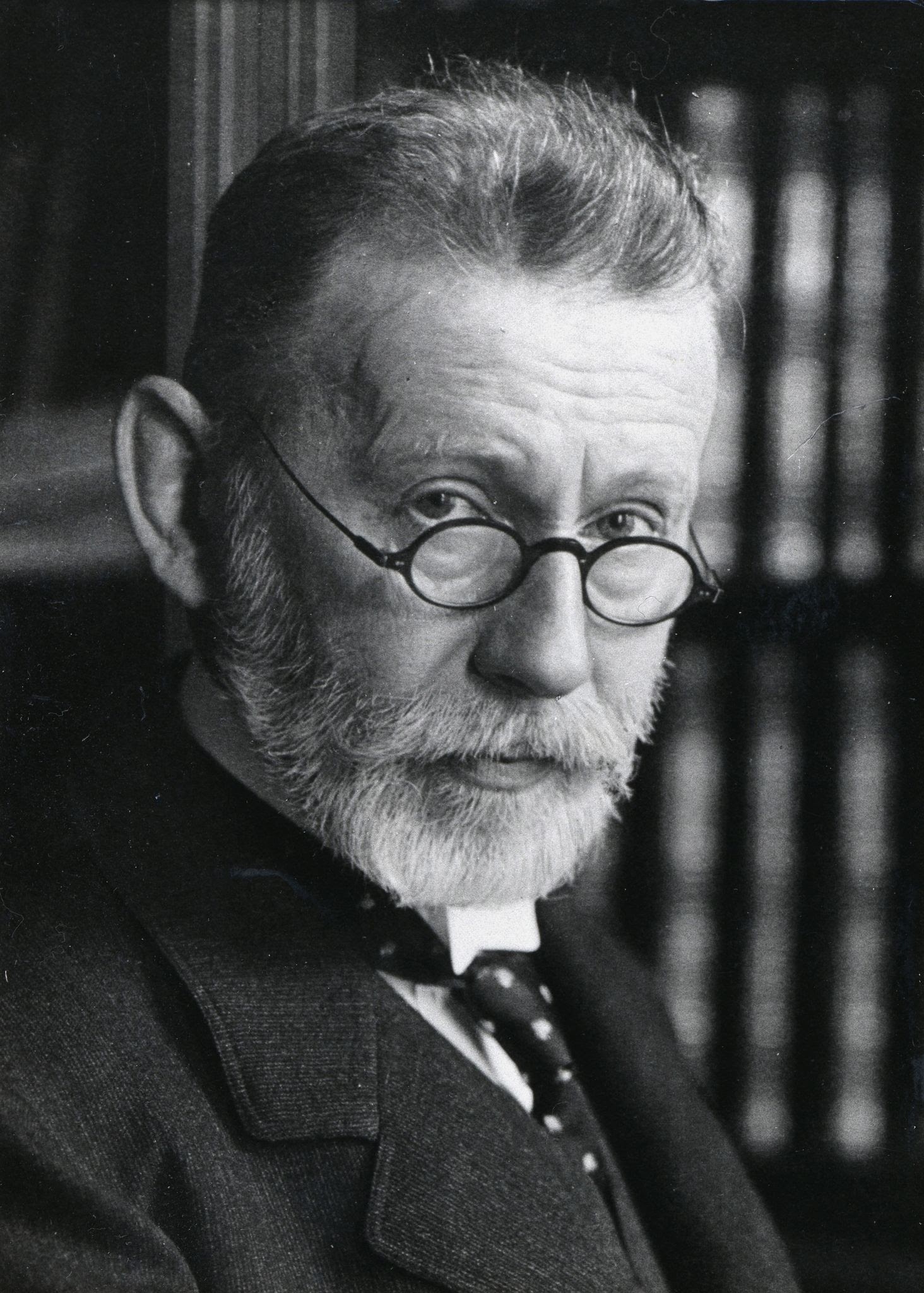Hardly a week passes in the normal flow of my patient care responsibilities without a visit to the hospital laboratory (which has just experienced another successful inspection by the College of American Pathologists—congratulations to Dr. Nancy Ulanowicz and her capable staff) to look through the microscope at a glass slide containing a stained film of blood. Examination of the peripheral blood smear is an essential and cost-effect component of the evaluation of disorders of the blood cells. Everything presents for inspection: the dominant doughnut-shaped red blood cells, the discoid platelets, the array of white blood cells. I glean useful information about the health or disease of these cells by observing their sizes, shapes, numbers, and relationships to one another. But even this simple and effective technique would not be possible without the singular contributions of one of the fathers of modern hematology, Paul Ehrlich.

Paul Ehrlich
Dr. Ehrlich (1854-1915) was born in Strehlen, Prussia, then a part of Germany but now in Poland. A precocious young man, he started in laboratory studies with his older cousin, a pathologist, using various stains on thin slices of body tissue so that they would be visible under a microscope as an aid to diagnosis. The German chemical industry of the 19th century boomed. Among its products were aniline dyes, which functioned either as acidic or alkaline chemicals. Ehrlich also invented neutral dyes. His application of these dyes imparted different colors to the cells, allowing better study of their interior components as well as distinguishing between various different kinds of cells. In this way, Ehrlich determined that there are more than one type of white blood cell. He named them according to their staining properties, names that have largely stuck to this day. Hence, we have neutrophils, cells that “love” neutral dye; basophils, darkly purple cells which “love” to react to basic or alkaline dyes; and eosinophils, reddish-orange cells that “love” to interact with eosin, an acid dye (the Greek word philos means love). Through such studies, Ehrlich connected in a limited way the appearance (morphology) of a blood cell to its function, and he discovered that blood cells in a much greater array inhabit the bone marrow.
He was the coiner of two terms now in common use not just in medicine but in our everyday speech: leukemia (being German, he termed it “weisses Blut,” or “white blood” due to all the abnormal white cells or leukocytes jamming up an affected person’s blood) and chemotherapy, by which he meant the application of chemicals to treated diseased tissues and fight infections. These days we reserve the term for drug treatment of cancer, but in its broad sense it can mean any use of a chemical compound—a drug—to treat disease. His great contribution to management of infectious disease was the development of an arsenic compound called Salvarsan, the first effective (albeit toxic) treatment for syphilis. Ehrlich called Salvarsan his “magic bullet,” a concept which is the predecessor to modern targeted therapy in cancer medicine. And if all that wasn’t enough, Ehrlich formulated important concepts regarding the human immune system that make him in many ways the father of immunology as well.
Whenever I seat myself before a microscope and peer down at all the variegated colors, shapes, and forms that so inform my ideas of what ails a particular person, I give a mental tip of the hat to Paul Ehrlich, who made it possible.